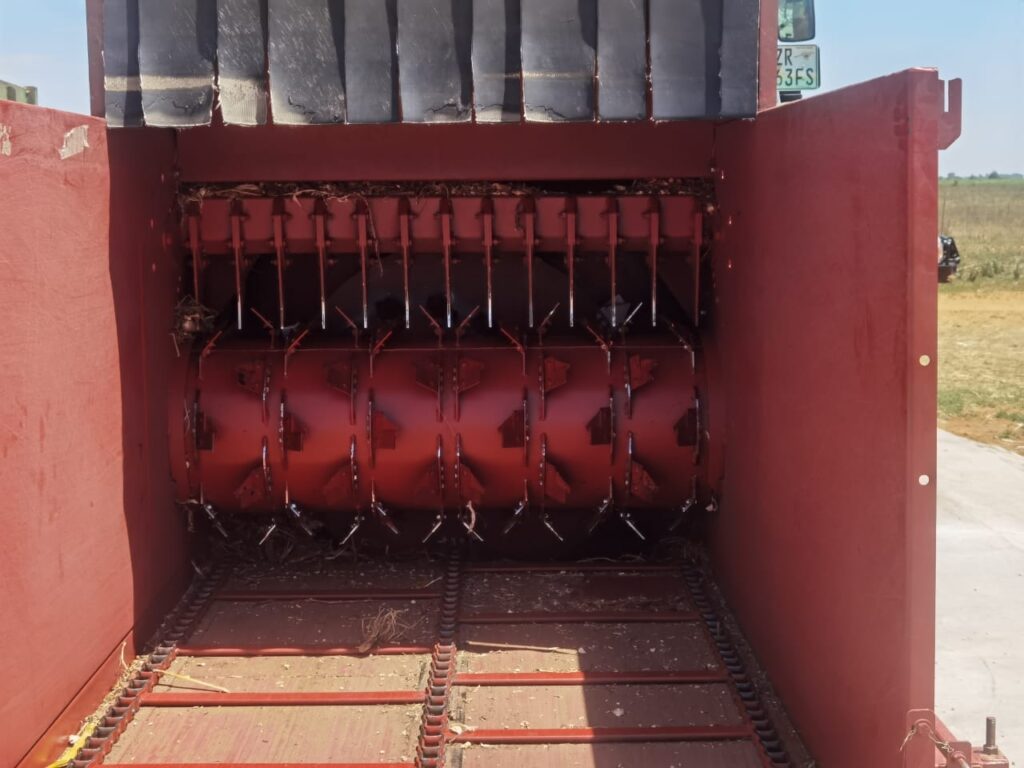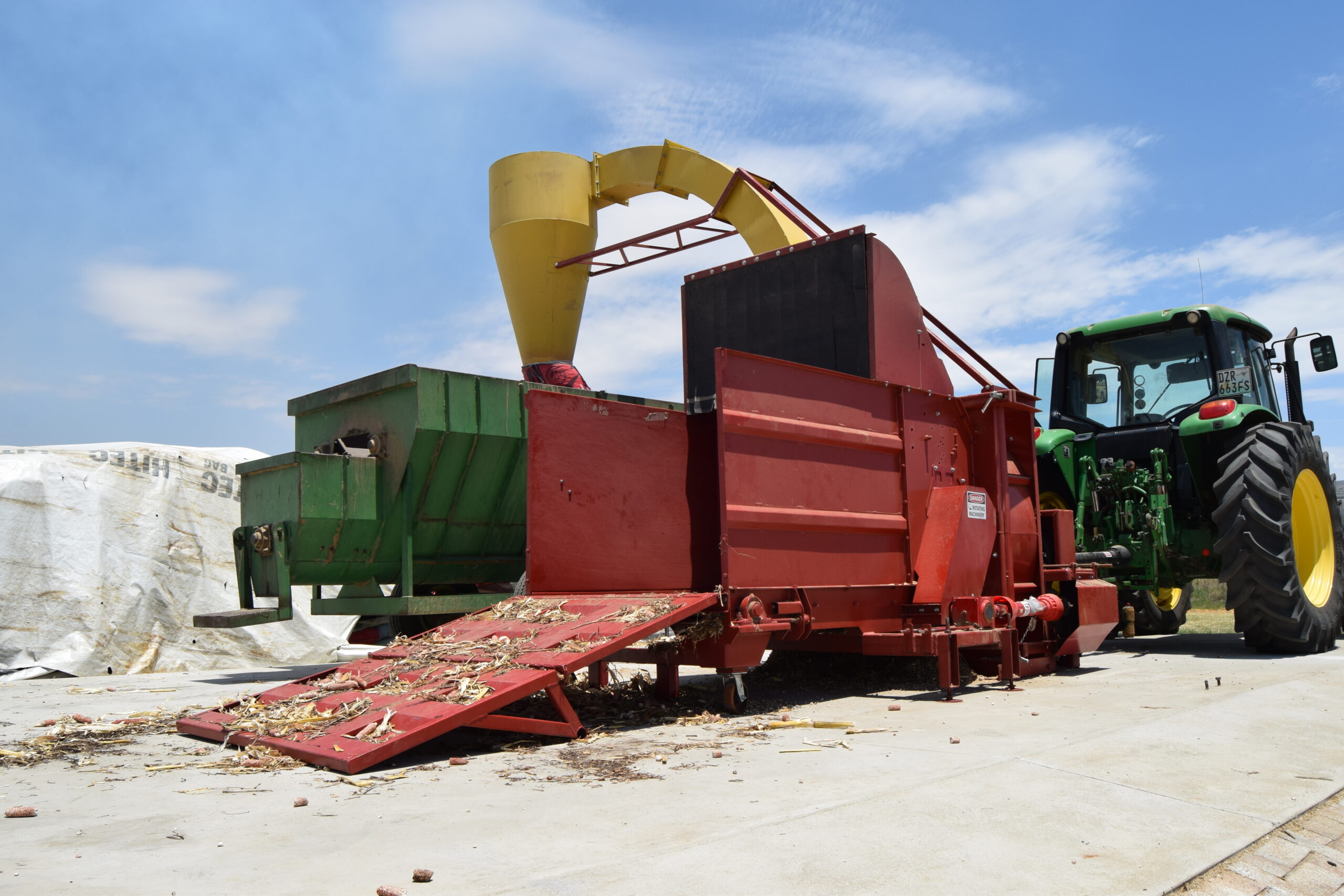Many hands may make light work, but with the right equipment, heavy work is even lighter with few hands! This is the major motivation behind the Drotsky M100’s design: It ensures that two pairs of hands can easily mill a heavy bale in minutes.
“It is significantly larger than a normal Drotsky hammer mill which still meets the standards for which the company is well known. The M100 is specially designed for the rapid processing of whole bales to the required size in one operation,” says Francesco van Wyk, Senior Mechanical Engineer at Drotsky.
The tractor-powered M100 helps farmers to make animal feed from baled crop residues in no time. During a demonstration of the machine at Bothaville, a bale of maize residue was processed in three minutes compared to the previous thirty minutes per bale. A massive time saver!

The grinding chamber is 1,4 metres wide. A hinged hook chain with steel rods feeds the bale into the hammer mill.
The process
Drotsky’s M100 hammer mill is suitable for round bales from 1,2 to 1,5 metre, as well as large bales thanks to the 1,4-metre grinding chamber. It can be fed with a backhoe, but the design ensures that it can also be done by hand. The bowl flap serves as a slope against which the bale can be rolled into the milling chamber.
Inside the bin is a heavy-duty pintle chain with flat steel bars that move the bale towards the bale breaker.
The bale breaker is a drum with 72 sharp toothed blades that break and cut up the bale. The material then moves through the steel teeth above to the shear bar where it is finally ground in the heart of the hammer mill by twelve hammers. Like any Drotsky hammer mill, the ground material is blown out through the sieve with the help of eight fans (depending on the model).
From there it can be blown into a mixer or into a storage room. Another option is to attach a cyclone so that the material can be blown straight into mixers or storage tanks.

The 72 toothed blades cut up the maize residue in no time!
The result
The time it takes to grind a bale depends on two factors. First, the size of the sieve used (how fine you want to mill it), and second, what kind of material is being ground. A good average is between three and eight minutes per bale.
The maize residue that Drotsky used in the demonstration took three minutes with a 20 mm sieve. Peanut hay and wheat straw should also take about three minutes. If you want to grind finer, you can use a 6 mm or 8 mm sieve.
Drotsky has a range of sieves available from 6 to 70 mm.
Technical aspects
The M100 is suitable for medium-sized farms to commercial farmers, feedlots as well as anyone who wants to reduce labour on their farm.
The electric model has a motor speed of 1 450 revolutions per minute and a rotor speed of 1 044 rpm. The minimum power requirement is a 90 kW tractor. This then delivers 540 rpm to the PTO which drives the hammer mill.









